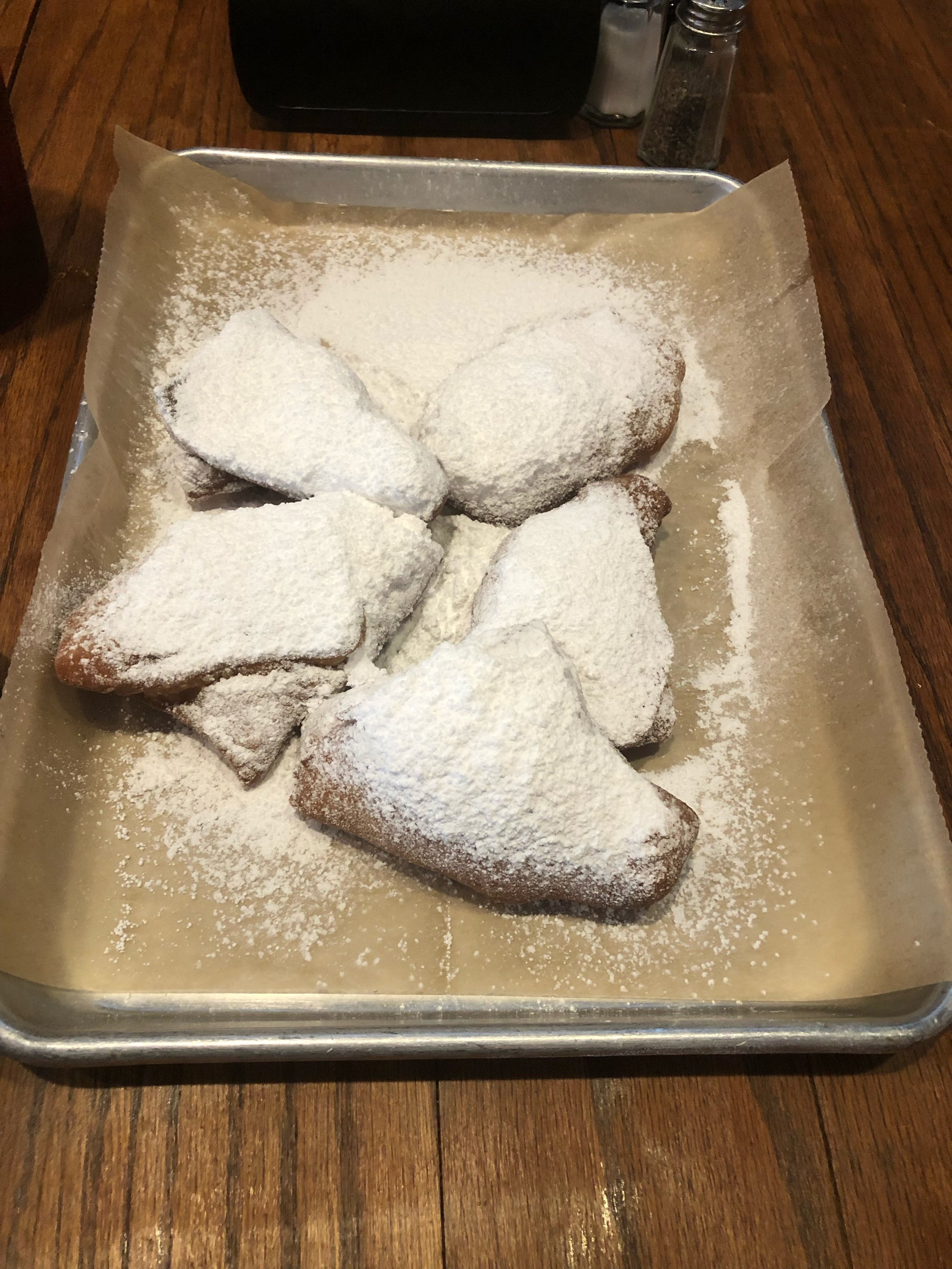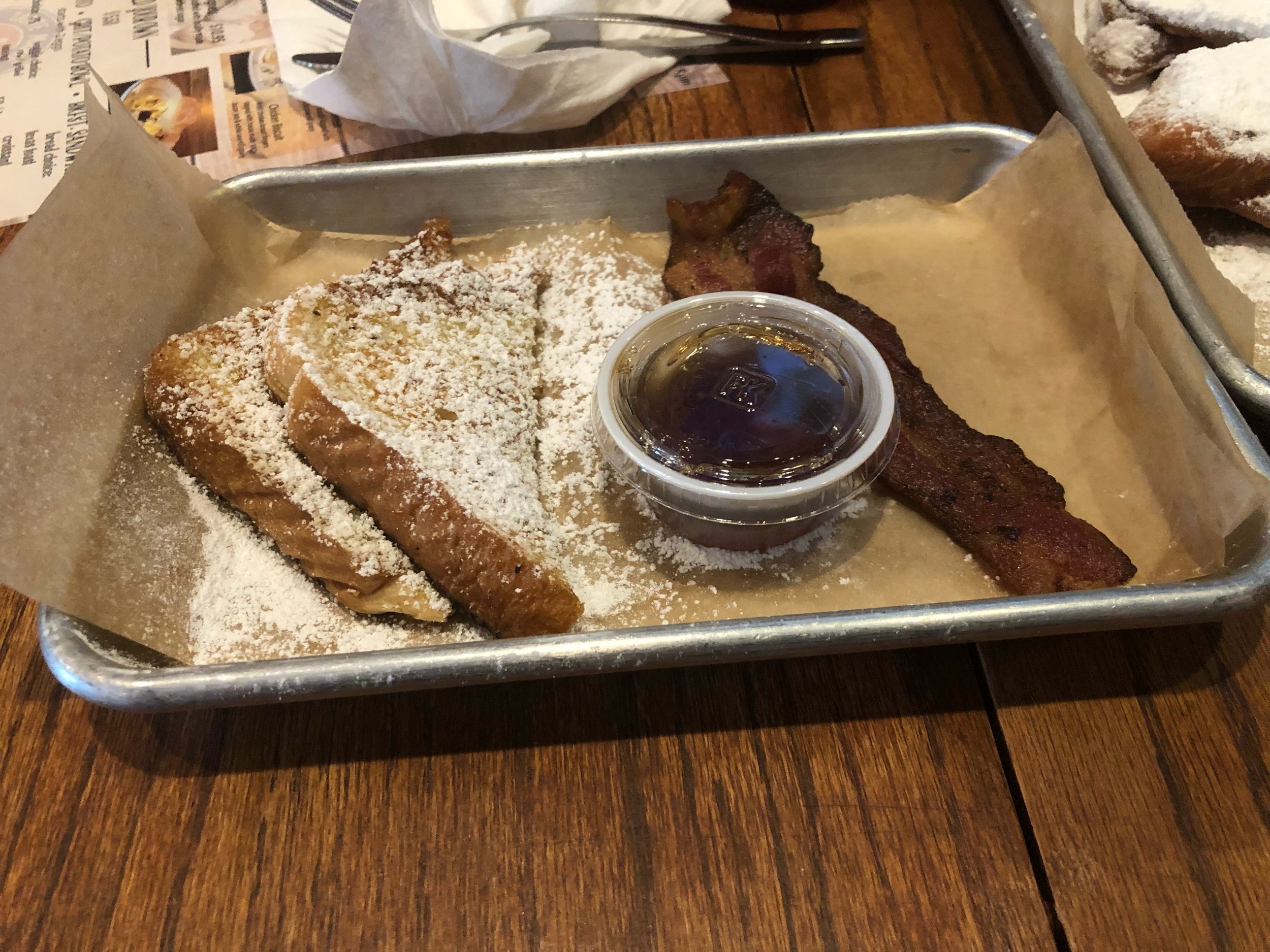I was waiting in line at the Tabasco Factory gift shop when I was deciding what to get my roommate as a gift. We have a tradition of getting each other dumb presents whenever we travel. I picked up these ridiculous tobacco sunglasses that were clearly meant for a child. I immediately thought: these are perfect for Saphia! I was explaining to those of us in line about our little tradition. She was born and raised in Houston, Texas but could not be further from a Texan. She comes from a very traditional Muslim family, and it has always been a running joke between us how she was raised in this very conservative Southern culture. Given that I also could not be further from a Texan, she brought me back a “Don’t Mess With Texas” t-shirt when she came home from Spring Break. I was using this as an example/justification for buying the overpriced sunglasses when I heard the cashier make a snarky noise. She looked at me funny and with a little judgement after telling this story. At the time, I really didn’t think anything of it. Then, just a few hours later, I started reading Floyd’s Girl by Tim Gautreaux.
At the center of this story is the clear tension and divide between Texans and the Cajun people of Louisiana. They see Texas as a wild and uncivilized desert where the people are completely reckless. Cajuns seem to be prideful in their culture. The characters in Floyd’s Girl see themselves as men and women of God. They see themselves as much more civilized and stronger compared to these wild Texans. Even the plot of the story itself is centered around these Texans acting uncivilized. Floyd is a proud Cajun man whose daughter Lizette has been taken by his wife’s husband to come live with them in Texas. As Floyd runs after these men to get his daughter, readers witness how violent this man from Texas becomes not only with Floyd and the other Cajun men, but Lizette too. Others from the community regardless of their age or ability ran to help Floyd get his daughter to safety. Our time in Cajun Louisiana showed me less of the Texan vs. Cajun feud , but focused more on the pride that the Cajun people have in their culture.
“She knew Texans had some kind of God, but they didn’t take him too seriously, didn’t celebrate him with feast days and days of penance, didn’t even kneel down in their churches on Sunday”
One of our first experiences with authentic Cajun culture was at the Tante Marie Café in Breaux Bridge, Louisiana. Andrew had explained that this was a local gathering point where people can come together to enjoy food and listen to music. The band consisted of a group of men and women playing the guitar, fiddle, violin, etc. They also had one man who occasionally would sing. This music completely uplifted the room. Even though people weren’t overtly dancing, I could sense the happiness and carefreeness in the room brought by the music. However, I think the biggest sense of Cajun Pride I’ve experienced thus far is in the food. Cajun food is so flavorful. It takes the most mundane dish, adds so many seasonings and spices to it creating a culinary masterpiece. Because so much of the culture is centered around food, it has created a sense of community. I saw large tables grow in number, and people bounced from table to table to talk to one another. I got this same sense in Floyd’s Girl through the character of Mrs. Boudreaux. When she first learns that Lizette has been taken to Texas, her first thoughts are if she will be able to eat good Cajun food. Her very first fear was that Lizette wouldn’t be able to get turtle soup piquante, gumbo, okra, or crawfish. Food is so embedded in the culture here. The Cajun people have taken basic dishes and turned them into something completely different, and that makes them proud. You can get this sense throughout the restaurant when people were gratified seeing how their food attracted a full house for lunch. Mrs. Boudreaux’s first fear was about Lizette not having Cajun food because this would cause her to lose part of her Cajun soul. By sitting in the Tante Marie, I could feel how jams like this are the heart and soul of Cajun Louisiana. They bring people together to celebrate their culture and each other’s company. Food is absolutely essential to the Cajun culture.
Our food at the Tante Marie Cafe!
“Living without her food would be like losing God”
Music is also a huge part of Cajun culture, and something that they take great pride in. On our last day in Cajun Louisiana, we had the opportunity to take part in a traditional jam at Tom’s Fiddle and Bow Shop in Arnaudville, Louisiana. It is a quaint town where everyone seems to know each other. However, it is different from many of the other rural towns we’ve visited on our trip. Arnaudville’s beauty is not physical, but its beauty comes from the people themselves. At Tom’s jam, we saw a community come together over its shared love of music. They were so excited to have us come visit and show a group of outsiders how special their talents are. I could see in the way that Tom and the other musicians talked to us how proud they were of preserving the culture of Cajun music. As we listened in on the jam, I struck up a conversation with Janice Landry, Ray Landry’s wife. Ray and Janice own a shop in Lafayette where they have weekly jams on the weekends. She was so proud of her husband and spoke so highly of his music. Janice showed me photos from their most recent jam and was so excited to point out to me how many musicians turned out. She is so prideful in her husband for all his efforts to spread and preserve Cajun music, and rightfully so. After only talking for a few moments, she asked to friend me on Facebook so I could continue to see future jams. Her Facebook feed is full of advertising and adoring over her husband’s music. My new Facebook friend’s enthusiasm made me eager to keep up with their lives and listen to videos of Ray’s music. It seems so cliché, but Tom’s jam was absolutely one of the highlights of the trip. I loved how full of life and prideful everyone was about their culture and wanting to share it with us. We weren’t just observers, but part of the jam itself. I look back so fondly on our hours spent in Arnaudville.
“Who would give up French music and rock and roll for country?”
I kept thinking back on Floyd’s Girl during our time at Tom’s Fiddle and Bow Shop. When Floyd talks about his wife, he can’t even fathom why she would leave Louisiana and all its culture for the wild west of Texas. Cajuns take such pride in their music and food that celebrating anything else is unfathomable. How can you leave such a strong community? He is eager to bring his daughter back not just to have her in his life, but to keep her intact with her Cajun roots. Floyd even sets aside a part of his small salary to give his daughter music lessons. Every aspect of Cajun culture is around today because of the pride that these people have for their roots. The Cajun culture runs deep, and I am so grateful that I got to experience this firsthand.
Tom’s Fiddle and Bow Shop!































